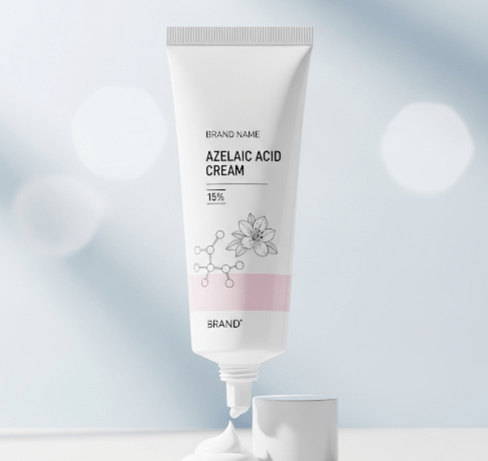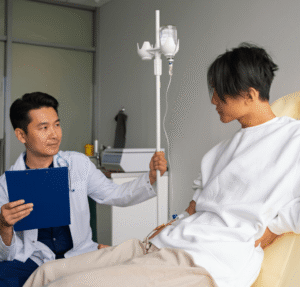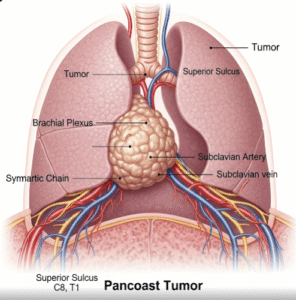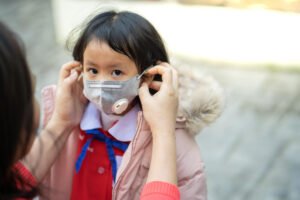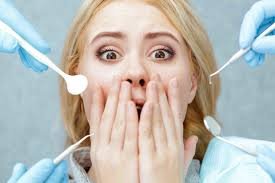What it is
Azelaic acid cream is a topical treatment formulated with azelaic acid, a naturally occurring dicarboxylic acid derived from grains and also produced by skin’s own microbiota. It has antibacterial, anti-inflammatory, exfoliating, and pigmentation-fading properties, making it a multi-purpose solution for acne, rosacea, hyperpigmentation, and uneven texture.
In Korea, azelaic acid creams are formulated at low to mid concentrations (5–15%), often combined with niacinamide, panthenol, or centella asiatica to improve tolerance. They are popular in dermatology clinics and cosmeceutical lines as part of acne, rosacea, and pigmentation protocols.
Why it’s done
- Acne management → unclogs pores, reduces bacterial growth, and calms inflammation
- Rosacea care → reduces redness and bumps without steroid use
- Pigmentation control → lightens post-inflammatory hyperpigmentation (PIH), melasma, and acne scars
- Skin texture refinement → smooths roughness and bumps
- Barrier-friendly exfoliation → more gentle than AHAs or BHAs, suitable for sensitive skin
- Long-term maintenance → safe for extended use with minimal risk of resistance or irritation
Alternatives
- Retinoids (adapalene, tretinoin) → stronger anti-acne, but more irritating
- Niacinamide serums → barrier repair, pigmentation, oil control
- Vitamin C serums → strong antioxidant, pigmentation brightening, but less tolerated in sensitive skin
- Salicylic acid (BHA) → oil-soluble exfoliant, clears pores, but may be drying
- Tranexamic acid → pigmentation-focused, often paired with azelaic acid for melasma
Korean dermatologists often use azelaic acid as a “bridge active” for patients who can’t tolerate harsher retinoids or acids.
Preparation
- Skin analysis → dermatologist evaluates acne severity, pigmentation, or rosacea type
- Routine simplification → avoid overloading with multiple strong actives at the same time (like high-strength retinoids or AHAs)
- Patch test → especially for sensitive or rosacea-prone skin
- Barrier strengthening → use ceramide moisturizers and SPF before introducing azelaic acid
How it’s Done
Application guidelines
- Use at night (though it can also be used in AM if tolerated)
- Apply a pea-sized amount over the whole face, not just on spots
- Start 2–3 nights per week, increase to nightly use after 2–3 weeks if skin adapts
- Always pair with a hydrating moisturizer to minimize dryness
- Use SPF in daytime (azelaic acid increases sun sensitivity slightly)
Combination strategies in Korea
- Azelaic acid + Niacinamide → pigmentation + barrier repair
- Azelaic acid + Retinoid (alternate nights) → acne + aging + texture
- Azelaic acid + Tranexamic acid → stubborn melasma treatment
- Azelaic acid + Centella asiatica → acne/rosacea calming protocol
Recovery
- 2–4 weeks → skin feels smoother, mild redness may improve
- 6–8 weeks → acne and rosacea bumps reduce, pigmentation begins fading
- 3–6 months → long-term improvement in tone, texture, and acne scarring
Korean clinics often pair azelaic acid cream with:
✔️ Pico laser or IPL for pigmentation boost
✔️ LED therapy for rosacea and acne inflammation
✔️ Acne scaling facials for pore maintenance
Complications
- Mild stinging, tingling, or dryness when first introduced
- Temporary redness (especially in rosacea patients)
- Rare allergic reaction
- Overuse may cause peeling or sensitivity
To avoid complications, dermatologists in Korea start patients on low strengths and slow titration schedules.
Treatment Options in Korea
Popular Korean azelaic acid formulations
- Dr. Different Vitalift-AZ Cream → azelaic acid + retinol blend (dermatologist-developed)
- Some By Mi AHA-BHA-PHA 30 Days Miracle Cream (with Azelaic Acid derivatives) → for acne-prone skin
- Wishtrend Azelaic Acid 10% Cream → lightweight brightening and acne control
- Isntree Spot Saver Mugwort Cream (with azelaic acid derivatives) → calming and brightening
Signature Korean protocols
- Acne-prone skin → salicylic cleanser + azelaic acid cream + gel moisturizer
- Rosacea-prone skin → azelaic acid cream + centella serum + mineral SPF
- Pigmentation (melasma/PIH) → azelaic acid + tranexamic acid serum + daily SPF reapplication
- Anti-aging sensitive skin → retinoid (alternate nights) + azelaic acid cream + peptide cream
Preventive K-beauty trend
- Many Koreans use azelaic acid creams at low concentrations (5–10%) early on to keep skin bright, smooth, and acne-free.
Medical tourism aspect
- International patients often receive azelaic acid cream as part of take-home pigmentation or rosacea kits from Seoul dermatology clinics.
Key Point
Azelaic acid cream in Korea is a multi-tasking, barrier-friendly treatment used for acne, rosacea, pigmentation, and texture. By delivering gentle exfoliation, antibacterial action, and brightening benefits, it offers visible results with fewer side effects than many other actives. Combined with hydrating K-beauty formulations and clinic-based therapies, it is a cornerstone for clear, even-toned, and resilient skin.

